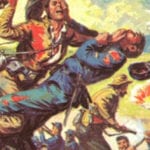 Food
Food  Food
Food  History
History 10 Odd Things Colonial Americans Kept at Home
 Weird Stuff
Weird Stuff 10 Superstitious Beliefs That Once Consumed Entire Cultures
 History
History 10 Bizarre Friendly Fire Incidents in Military History
 Technology
Technology 10 Modern Technologies That Accidentally Imitate Ancient Magic
 Mysteries
Mysteries 10 Mysteries of the Human Genome
 Weird Stuff
Weird Stuff 10 Things So Rare They’ve Only Been Found Once
 History
History 10 Legends Whose Last Moments Undid Their Glory
 Health
Health 10 Futuristic Ideas to Treat Common Medical Problems
 Weird Stuff
Weird Stuff Ten Surreal Attempts to Reverse Baldness
 Food
Food 10 Everyday Foods You Didn’t Know Were Invented by the U.S. Military
 History
History 10 Odd Things Colonial Americans Kept at Home
 Weird Stuff
Weird Stuff 10 Superstitious Beliefs That Once Consumed Entire Cultures
Who's Behind Listverse?

Jamie Frater
Head Editor
Jamie founded Listverse due to an insatiable desire to share fascinating, obscure, and bizarre facts. He has been a guest speaker on numerous national radio and television stations and is a five time published author.
More About Us History
History 10 Bizarre Friendly Fire Incidents in Military History
 Technology
Technology 10 Modern Technologies That Accidentally Imitate Ancient Magic
 Mysteries
Mysteries 10 Mysteries of the Human Genome
 Weird Stuff
Weird Stuff 10 Things So Rare They’ve Only Been Found Once
 History
History 10 Legends Whose Last Moments Undid Their Glory
 Health
Health 10 Futuristic Ideas to Treat Common Medical Problems
 Weird Stuff
Weird Stuff Ten Surreal Attempts to Reverse Baldness
Top 15 Oddities of McCartney, Dylan and The Stones
By 1966, The Beatles had achieved an incredible amount of success. The group was selling records by the millions. Young woman and men all over the world were going crazy for The Beatles. The band soon became the target of some bizarre accusations surrounding serious topics, including religion. On August 28, 1966, The Beatles gave their last taped press conference in the United States. During the fifteen minute session, the band received some weird questions, including, “Mr. Lennon and McCartney, Time Magazine has said your song Day Tripper is about a prostitute and Norwegian Wood is about a lesbian?” “Have you ever trained or used Beatles doubles?” “Mr. Lennon, is it true that you are going to give up music for a career in the field of comparative religion?” Lennon responds, “Ha, a little joke is going around.”
In an August 19, 1966, interview, an important question was asked to The Beatles. “American people keep asking you guys about Vietnam. Does this seem useful? Why should they ask you about it, you’re successful entertainers?” Lennon responds, “Because Americans always ask showbiz people what they think, and so do the British.” In the 21st century, celebrity opinions hold influence on the media. The persona of a successful musician or actor is extremely powerful. Just imagine if you were able to capture that celebrity and use it for your own agenda. It is hard to comprehend the idea that Paul McCartney, Bob Dylan or Brian Jones were killed and replaced by a look-alike in the 1960s. We love these men, and that is why we research these accusations. It is fun to hear what people are saying.

In the fall of 1969, shortly after the release of The Beatles Abbey Road album, a rumor swept America concerning the death of Paul McCartney. People began to study the cover of Abby Road and wonder why McCartney is barefoot in the picture and out-of-step with the other Beatles. The evidence and suggestions regarding McCartney’s death quickly spread around the world. People began to phone in claims that The Beatles were using extensive hidden messages and backmasking in their records. The Paul is dead rumor popularized the use of backmasking in music. Let’s examine some of the most notorious claims.
During 1969, the song Revolution 9 was played backward on numerous American radio stations. In the tune, the words “turn me on, dead man” can be recognized. In the Beatles single I’m So Tired, a sequence of gibberish can be heard, when played in reverse, the phrase “Paul is dead man, miss him, miss him” can be made out. In Strawberry Fields Forever, some believe John can be heard saying “I buried Paul” in a slow deep voice over the final refrain. People have pointed to the continued reference of the walrus in The Beatles music. In the song Glass Onion, John Lennon can be heard saying “Paul was the walrus.” This has been described as a reference to Paul’s disfigured corpse.
To add fuel to the fire, The Beatles rarely commented on the Paul is dead rumor. After August of 1966, the band stopped making live performances. During this time in history, the group’s music changed. The Beatles wrote lyrics about death and suicide, and used dark imagery in their songs. The band’s singles were far from the fun loving collaborations that populated the radio during the early 1960s. By the end of the decade, the long time friendship between Paul McCartney and John Lennon deteriorated. The band separated in 1970, and Paul sued John, George and Ringo for breaking their contract with Apple Corp. The Beatles underwent an extensive change in their appearance from 1967-1970.
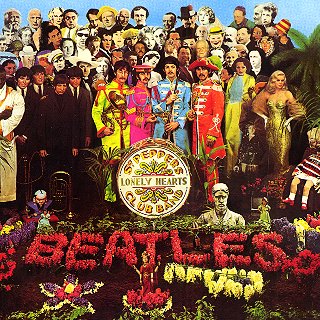
Sgt. Pepper’s is The Beatles 8th studio album, released on June 1, 1967. The cover image that was captured for the record has raised controversy. It was a difficult picture to take and it cost the band thousands of dollars. For the picture, 57 life-sized cardboard photographs of celebrities were constructed. The band also used nine waxwork models, a stone bust, a portable TV, four statuettes and a doll wearing a jumper with the words “Welcome the Rolling Stones.” The Sgt. Pepper’s cover appears to show a funeral service. All of the celebrities used in the picture have a common death experience. In 1967, when the photo was taken, most of the people had either died young or experienced a near-death accident.
Many theories have been put forward to explain the inclusion of these specific people. In the case of Bob Dylan’s image, he experienced a bad 1966 motorcycle crash. The Sgt. Pepper’s album cover includes the image of Stuart Sutcliffe, who was The Beatles original bass player, who died in 1962. Some other noted appearances include occultist Aleister Crowley, Mae West, Jewish comedian Lenny Bruce, architect Simon Rodia, Robert Peel, Dylan Thomas, Dion, Marilyn Monroe, comedian Max Miller, Marlon Brando and many more. To the immediate left of the band is a younger cardboard copy of John, Paul, Ringo and George. The men appear to be sad and mourning.
Like all Beatles album covers, it has been suggested that a large number of clues are visible that imply Paul McCartney’s death. The wreath of yellow flowers included on the cover appears to be in the shape of a left-handed bass guitar. A small white toy car is visible on the lap of the Shirley Temple doll. This is a bizarre feature that has been attributed to a possible car wreck. Shirley Temple is the only person, besides The Beatles, to appear in the image twice. The cover shows Paul McCartney wearing a hat with the letters O.P.P, which stands for Ontario Provincial Police. This falls in line with the reports that Paul McCartney was replaced with a man named William Sheppard, coming from the Canadian police department. The Sgt. Peppers album cover remains a great piece of photographic history.
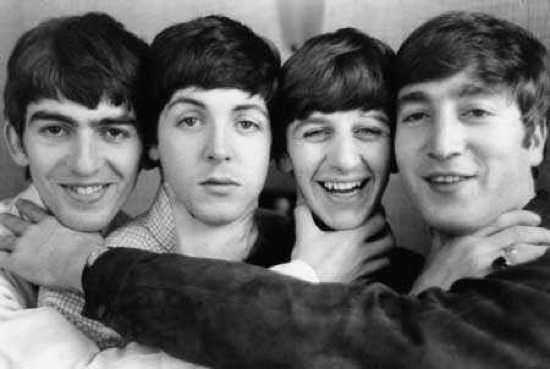
A large collection of stories exist on the Internet regarding the death of Paul McCartney. The most prominent is the 60If documents. In late 1999, a man named Michael Abram broke into George Harrisons’ Friar Park home and stabbed him seven times. Harrison was nearly killed in the attack. As the story goes, George was targeted for murder because he collected evidence on the death of Paul McCartney and mailed it to some of his far eastern friends. In 2002, after George Harrison died from cancer, the 60IF document appeared online. The report is a reference to the 28IF license plate pictured on the Abby Road cover. It indicates that if Paul McCartney was alive, he would be 60-years-old in 2002. The tale begins with a prominent Jewish man named Brian Epstein. Epstein helped launch The Beatles career and he was their longtime manager.
In 1967, Epstein’s duties in the group deteriorated, and he was pushed away from the band. He died on August 27, 1967, of a drug overdose. As the story goes, On September 11, 1966, Brian Epstein and Paul McCartney were traveling in a car when they were accosted by a group of men in black suits. Brian and Paul were kidnapped. Five days later, John, George and Ringo received a call to go identify the dead body of Paul McCartney. Paul was found at the foot of a hill, a short distance from a white Volkswagen. He was in a ghastly state. Paul had been dead for a long time. The left side of his face was torn to pieces. His right ear had been bitten away by animals. Paul’s body was half burned and his teeth were hanging from his lips. The 60IF report says that at the scene, John and George heard a man near the body say “Look …it seems like a walrus!”
Brian Epstein’s dead body was discovered two days later. His car was pushed over a cliff and set on fire. Written on the side of the car was the word “Jude,” which is German for Jew. In September 1941, the Nazi regime ordered German Jews over the age of 6 to sew a yellow Star of David on their clothes with the word Jude (Jew) in bold. The 60IF report says that John, George and Ringo were determined to continue their music, so they allowed a secret group of cosmetic surgeons to replace Paul. However, in exchange for the help, the band was told to keep quiet. The penalty for refusing silence was death. The document says that a third Paul McCartney was used in the recording studio until a double was found. The candidate for Paul was William Sheppard from the Canadian Military Police.
The report identifies a number of differences between Paul McCartney and William Sheppard. Paul was long-sighted, Bill is short-sighted. Paul’s hair naturally went from the left to right, while Bills from right to left. Paul had a round face and Bill has a longer face. Paul was left handed and Bill is right handed. After Paul’s death, the band began to refer to themselves as Beatles, instead of The Beatles. Bill had an older appearance, so they grew beards and mustaches. The paper continues to suggest that the KKK was responsible for the murders, and that Brian Epstein was the primary target. It says that Yoko Ono was a spy for the CIA, and that she was responsible for John Lennon’s death. The document claims that Paul McCartney died because he was unable to get medication for a disease he suffered from, apparently a form of Irritable Bowel Syndrome.
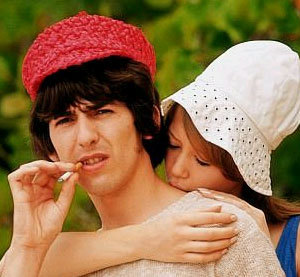
Joel Gilbert is an American film director, writer and musician. He runs Highway 61 Entertainment, and has produced a number of films. Gilbert has developed four documentaries on the life of Bob Dylan and has released a collection of politically minded films about Israel and the United States. Later in this article, we will discuss the replacement of Bob Dylan. If we continue to follow this logic, Highway 61 Entertainment is putting out false information on the true life of Dylan. In 2010, Joel Gilbert released a documentary titled ‘Paul McCartney Really Is Dead: The Last Testament of George Harrison’. The information included in the film is similar to the 60IF document. However, many of the facts and circumstances of Paul’s death are different. It appears that we have several widely conflicting arguments.
In the Highway 61 Entertainment documentary, Paul McCartney is killed on November 9, 1966. On the Sgt. Peppers album cover, a clue has been discovered on the drum set. It seems that the date 11-9 appears before the words “He Die.” In an interesting twist, it should be noted that British dates are written in a format of day-month-year instead of month-day-year. This suggests a date of September 11, which follows the 60IF document. According to the Last Testament of George Harrison, Highway 61 Entertainment received a of set of mini-cassettes, in 2005. The tapes described a plot to replace Paul McCartney with a man named William Campbell (not William Sheppard). Campbell was selected in a Paul McCartney look-alike contest (not from the Canadian military). Some aspects of Paul’s death are different in the documentary.
Instead of a kidnapping, Paul is said to have died by way of a car accident. In the film, McCartney and Lennon have an argument in the recording studio, and Paul leaves in the middle of the night. He drives away in his white convertible and picks up a young hitchhiker named Rita. Rita becomes delirious with excitement and causes Paul to crash his car into a large truck. The description is similar to the death of Tara Browne, which will be discussed later. According to the account, McCartney was decapitated in the crash. John, George and Ringo were called to the scene. At that time, the group was approached by a MI5 agent named “Maxwell.” Maxwell made the comment about Paul looking like a walrus, and then he convinces the band to use a replacement. The documentary claims that “Rita” was actually Heather Mills. This is strange because Mills was born in 1968. You can watch the documentary instantly on Netflix.
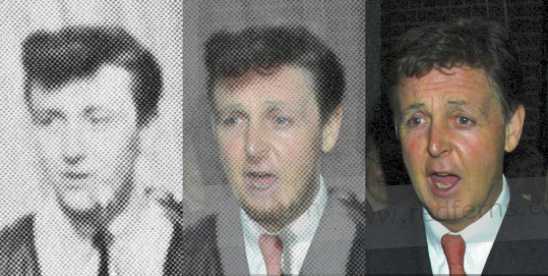
Phil Ackrill is a man who was a member of an early 1960s group named Denny Laine and The Diplomats. Ackrill disappeared from the music scene in 1965, and has become connected with the Paul McCartney conspiracy. He played guitar and backup vocals for Denny Laine and The Diplomats. In 1964, Denny Laine left the band to join The Moody Blues. He sang the Moody Blues first big hit, Go Now. In August of 1966, Denny Laine quit The Moody Blues. He formed a group named The Electric String Band, which lasted only a couple years. In 1971, Denny Laine, Paul McCartney and Linda McCartney formed the band Wings. Denny Laine remained part of Wings for the group’s entire 10 year run. In this theory, the details surrounding Paul McCartney’s death are different.
The story starts with Paul going missing in France. It is said that Brain Epstein traveled to France to find Paul. On their return flight, the men experienced a plane crash. Paul’s disfigured body was tossed from the plane. It was discovered on a beach near Outreau, North France. The conspiracy continues to describe a musician named Phil Ackrill, who was hired as Paul’s double, in 1965. Ackrill was a good lyricist and could play the piano and drums. He had a beautiful voice, but could not imitate Paul. For this reason, the band decided to use a voice imitator to complete Sgt. Peppers, the Magical Mystery Tour and some of the White album. In 1968, Phil Ackrill officially became Paul McCartney.

The Honourable Tara Browne was a young London socialite, who was killed in an automobile accident on December 18, 1966. Browne was the son of Dominick Browne, 4th Baron Oranmore and a long lasting member of the House of Lords. Tara’s mother is Oonagh Guinness, who was the heiress to the Guinness fortune and the youngest of the three Golden Guinness Girls. Tara Browne was the heir to the Guinness dry stout fortune. The circumstances surrounding his death are connected to The Beatles and Brian Jones of The Rolling Stones. For starters, Tara Browne died during the same three-month time span that Paul McCartney is said to have passed. Browne was killed when his white Lotus Elan convertible crashed into a large truck near the junction of Redcliffe Square and Redcliffe Gardens, in Kensington, London. Tara Browne’s crash is extremely similar to some of the accounts of Paul McCartney’s fatal accident.
A woman named Suki Potier was in the car with Tara Browne when he was killed. Suki was an English model. Following the crash, Potier started dating Brian Jones of The Rolling Stones, who was a great friend of Tara. Suki moved into Jones fifteenth century farmhouse in the last few months before his death. Tara Browne had a relationship with The Beatles. He was friends with both John Lennon and Paul McCartney. Tara Browne was with Paul McCartney when he crashed his moped in 1965, and received facial injuries. In 1967, The Beatles released the song A Day in the Life. The song has become famous for words describing a car accident. John Lennon has said the lyrics for A Day in the Life were written about the death of Tara Browne. “He blew his mind out in a car. He didn’t notice that the lights had changed. A crowd of people stood and stared. They’d seen his face before, nobody was really sure if he was from the House of Lords.”
Seeing how Tara Browne was from the House of Lords, the lyrics are interesting. Some people have suggested that Paul McCartney was in the car with Tara Browne when he was killed. Web pages have been devoted to the comparison of Tara Browne and Paul McCartney images. Some have suggested that Tara replaced Paul McCartney, or that Brian Jones was in the crash. There are rumors of a gay relationship between Jones and Browne. Others have noted McCartney’s friendship with Tara Browne’s sister, Sabrina Guinness. In an interesting fact, Keith Richards named his second son Tara after Tara Browne. Sadly, Tara Richards was born prematurely and died soon after birth. In the photograph, Tara Browne can be seen on the right side of the image, looking a bit like Paul. Pictures of Dominick Browne are revealing. His eyes look like Paul McCartney in 2011.
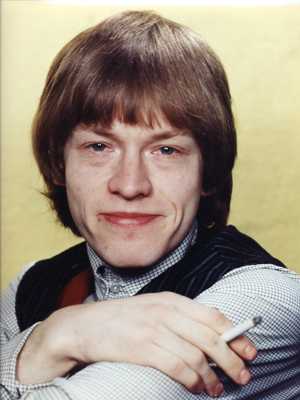
In April of 1962, Brian Jones formed The Rolling Stones. He was a talented musician and primarily played guitar and harmonica for the Stones. Brian Jones was raised in Cheltenham Spa, which is a borough in Gloucestershire, England, that has a reputation for being wealthy. His father was an aeronautical engineer. During his youth, Brian excelled in academics and sport, particularly swimming, even though he suffered from asthma. In the early years of The Rolling Stones, Brian Jones was the band’s leader. Along with Keith Richards, he was the force behind the group’s guitar work. Everything changed for Brian Jones in 1966. He began to distance himself from The Rolling Stones. Jones became a multi-instrumentalist, rather than a guitarist.
One of the greatest guitar players of the 1960s stopped performing, and his natural progression of the instrument stopped. Brian Jones began to drink and he used a cocktail of drugs. His skin became pallid and blotchy and he put on weight. Jones became unrecognizable to his friends. In separate accounts, he beat up his girlfriend and pulled a knife on Mick Jagger. Brian threatened suicide and was extremely paranoid during this time of his life. In the summer of 1969, Jones attendance at The Rolling Stones recording sessions became more erratic. In June, he was kicked out of the band. On July 3, 1969, Brian Jones was killed when he drowned in his swimming pool. Jones death was ruled “death by misadventure,” caused by excessive use of drugs and alcohol. Since that day, a large amount of information has been presented on the case.
The majority of controversy is over a man named Frank Thorogood. Frank Thoragood was with Brian Jones on the night of his death. He was a construction worker who had been hired to renovate Brian’s Cotchford Farm estate. Frank Thorogood and Brian Jones had a bizarre relationship that was full of disagreement. In books written on the life of Brian, it is said that Thorogood was not just a builder, but had been asked to “keep an eye” on Jones by the Stones. On his death bed, Frank Thorogood allegedly confessed to the murder of Brian Jones. In an interesting twist, Brian Jones was living with Tara Browne in 1966. Tara was the London socialite who was killed in a car crash on December 18.
According to Wikipedia, after the death of Tara, his girlfriend, English model Suki Potier, began to date Brian Jones. She is quoted, “He gave me a shoulder to cry on and he picked up the pieces and made me feel like a woman again.” However, unless Brian Jones had two girlfriends, he couldn’t have started dating Suki Potier until he broke up with Anita Pallenberg, in March of 1967. At the time of his death, Tara Browne was married with two children, but it has been speculated that he was dating Potier. Suki Potier died in a car accident on June 23, 1981. The connection between these individuals has caused widespread conspiracy rumors. At the front of the conspiracy is the idea that Brian Jones was killed in a car accident with Tara Browne and replaced, marking the beginning of his long decent.

Amanda Lear is a French singer, lyricist, composer, painter and television personality. She began her career as a fashion model in the mid-1960s, and was also the muse of Spanish surrealist painter Salvador Dalí. Lear was a multimillion dollar selling Disco Queen in the mid-1970s to the early 1980s. To date, Amanda Lear has sold over 25 million singles. Despite the fact that she appeared nude in a 1977 edition of Playboy magazine, Lear has been accused of being a transsexual or an intersexual. After her Playboy spread was released, Lear gave the quote “and they could see I am a woman like everybody else.” People have speculated about her height, which is (5ft 9.25 /176 cm), her masculine facial features and, most of all, her exceptionally low baritone-like vocal timbre.
Amanda Lear is one of Europe’s leading gay icons. She has regularly performed at Gay Pride festivals held in France, Italy, Germany, Switzerland, Austria, Belgium, The Netherlands and Greece. The life of Amanda Lear is confusing and there is a lack of photographic evidence from her youth. Her Wikipedia page indicates that Amanda was born in either 1939 or 1946. Amanda Lear was part of the Swinging London lifestyle of the 1960s. She was friends with The Beatles, Twiggy, The Rolling Stones, Bowie and a large collection of rock stars. Lear became a “stalwart of London’s demimonde” and an exotic name on the nightclub circuit. She was romantically linked with Bowie, Brian Jones and Tara Browne. Amanda Lear is the basis for a large collection of gay rumors surrounding famous people, including Lennon, McCartney, Bowie, Jones, Tara Browne and Salvador Dali.
Her connection with Brian Jones resulted in the ironic Rolling Stones track “Miss Amanda Jones,” included on the 1967 album, Between the Buttons. In 1979, Lear married French bisexual aristocrat Alain-Philippe Malagnac d’Argens de Villèle who, in fact, was the former lover turned adopted son of diplomat and controversial gay novelist Roger Peyrefitte. The life of Amanda Lear is interesting. She has been connected to a large group of gay men. Lear dated both Tara Browne and Brian Jones, who are highly featured in this article. The conspiracy theory revolves around the suggestion that Amanda Lear may be a famous man in disguise, possibly someone involved with the December 18, 1966, car accident. If you see Lear in her older photographs, she looks like a man. In many of her images, Amanda is hiding her neck, giving the visual impression of a fake head imposed on body.
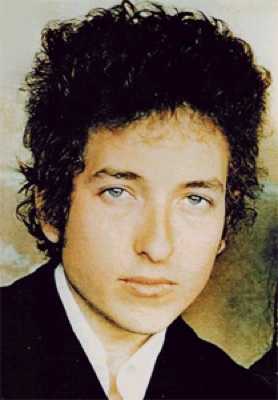
Bob Dylan’s early work has a large amount of political, social and literary influences. Some of these songs include Blowin’ in the Wind, The Times They Are a-Changin’, Oxford Town, Masters of War and A Hard Rain´s Gonna Fall. In 1964, Bob Dylan’s music career changed. His stance on war and the civil rights movement was silent, even after Martin Luther King Jr. was quoted saying that protest songs were important in bringing unity to America. In Dylan’s career, he only wrote protest songs over a 20 month span, from January 1962 to November 1963. What happened to Bob Dylan in November of 1963?
When accepting the “Tom Paine Award” from the National Emergency Civil Liberties Committee shortly after the assassination of John F. Kennedy, an intoxicated Dylan brashly questioned the role of the committee, characterized the members as old and balding, and claimed to see something of himself (and of every man) in Kennedy’s alleged assassin, Lee Harvey Oswald. In August of 1964, the album Another Side of Bob Dylan was released, which was far from his early work. Dylan moved from a leading contemporary songwriter of folk music to a folk-rock pop-music star. During this time, Bob Dylan’s physical appearance underwent a rapid change.
His scruffy jeans and work shirts were replaced by a Carnaby Street wardrobe. Bob Dylan wore sunglasses day or night and pointy “Beatle boots.” Before 1964, Dylan didn’t wear sunglasses often. He also began to gain a reputation for anger. Dylan regularly argued with the media and gave bizarre statements in interviews. People began to label his personality fake and uncharacteristic. In November of 1965, Bob Dylan married a woman named Sara. Very little is known about Sara’s early life and her relationship with Dylan. Their marriage was kept a secret. Her influence on his life should be relevant, seeing how Dylan changed his musical mindset after meeting Sara.
By 1963, Bob Dylan and Joan Baez became prominent members of the civil rights movement. In 1965, Dylan released a song titled Positively 4th Street. The lyrics of the classic single are angered. Bob sings about vengeance and paranoia. This information suggests that something might have happened to Bob Dylan at the end of 1964. In the Beatles song Dig It, which we will examine later in this list, John Lennon sings “Like a Rolling Stone, A like a Rolling Stone.” In the context of this article, it may suggest that Bob Dylan was replaced by a look-alike on two separate occasions during the 1960s, once at the end of 1963 and again after his motorcycle crash of 1966.
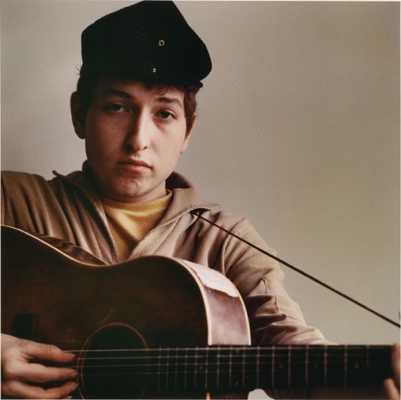
On July 29, 1966, Bob Dylan crashed his motorcycle while riding near his home in Woodstock, New York. Even today, the details surrounding the accident are unclear. In fact, many important facts around the life of Bob Dylan are closely guarded. The accident has not been treated like a defining moment in Bob’s life. However, his musical stance and performance career was altered after the event. In 1965 and 1966, Bob Dylan was on fire. He wasn’t merely burning his candle at both ends. He was using a blowtorch. Dylan’s productivity was remarkable and he made three of his best albums. They were Bringing It All Back Home, Highway 61 Revisited and the double album Blonde on Blonde. The music was made within a 14-month span, which was likely fueled by methamphetamine.
In 1966, Bob Dylan was extremely thin and had the look of a speed addict. In June 1966, Bob had returned from a nine-month world tour, which was especially grueling because he received hostility over his new sound. During the tour, Dylan plugged his guitar in and added an electrified backup band. Following Bob’s motorcycle accident, he disappeared for six weeks and canceled a scheduled 64-date American tour. A number of different accounts of the crash have been given by Bob Dylan and his friends. This has caused people to become suspicious of the incident. About the accident, Bob Dylan said that he broke several vertebrae in his neck. However, no ambulance was called and Dylan was not hospitalized.
Bob’s biographers have written that the crash offered Dylan the much-needed chance to escape from the pressures of life. Others have suggested that Bob entered a drug rehabilitation clinic and that the motorcycle accident was a cover. In the wake of his crash, Bob Dylan withdrew from the public and, apart from a few select appearances, did not tour again for eight years. The amount of Bob Dylan pictures available from 1966 is immense. In 1967, his photographs resemble an entirely different individual. This has raised the conspiracy that Bob Dylan was killed in a 1966 motorcycle crash and replaced with a look-alike, possibly the second such occurrence for Dylan. In the back of your mind, you could be wondering how Bob Dylan, the greatest poet, lyricist and protest writer of the early 1960s, sat by quietly watching as Vietnam and the Civil Rights Movement of the late 1960s exploded. Then you examine the two photographs provided.
“Nobody knows what it’s like to be the sad man, to be the bad man, behind blue eyes. Nobody knows what it’s like to be hated, to be faded, to telling only lies.” The photographic comparison of Bob Dylan from the 1960s shows some bizarre characteristics. The most unexplained is his blue eyes. Before 1964, Bob Dylan did not wear sunglasses in any pictures. His hair was long, but styled much differently on the top of his head. Many pictures exist of a young Bob Dylan, but 95% of them were taken with black and white film, so it can be difficult to determine his eye color. A set of pictures that were captured during Bob’s 1962 debut album cover shoot clearly show him with brown eyes. In 1965 and 1966, hundreds of photographs were taken of Bob Dylan. He is wearing sunglasses in almost every image.
From 1964-1966, Bob Dylan can be seen with blue eyes in a number of photographs. He is also extremely thin. In 1967, the available images of Bob Dylan are gone. By 1968, some shots of Dylan exist, but he looks quite a bit different. For the most part, during this time of his life, Bob Dylan doesn’t wear glasses, but his brown eyes are back. Since the early 1970s, Bob Dylan has been photographed with blue eyes. It is a strange phenomenon that is not explained. Pete Townshend recalls. “In 1969, we (The Who) were set to play our new rock opera Tommy to the press at Ronnie Scott’s Jazz Club. It was our first live performance before the critics. As I crossed Dean Street I imagined I heard a voice shouting Judas. Did I fancy myself to be Bob Dylan?”
Mr. Jones is a man that has been included in the lyrics of many famous songs. He is a mysterious individual that longs to be in the spotlight. Mr. Jones is a plastic surgeon and talented doctor. He doesn’t quite know what is happening, but is pressured to complete his work in silence. Mr. Jones is a lonely man who will last forever. The persona of Mr. Jones was created in the 1965 song Ballad of a Thin Man, which was written and recorded by Bob Dylan. In the lyrics, Dylan sings about Mr. Jones who walks into a room of intentionally bizarre circus freaks and doesn’t “know what’s happening,” but realizes that something is terribly wrong. Following the release of the single, Bob Dylan was asked about the identity of Mr. Jones.
He replied that “Mr. Jones is a pinboy. He also wears suspenders. He’s a real person. You know him, but not by that name. I saw him come into the room one night and he looked like a camel. He proceeded to put his eyes in his pocket. I asked this guy who he was and he said, “That’s Mr. Jones.” Then I asked this cat, “Doesn’t he do anything but put his eyes in his pocket?” And he told me, “He puts his nose on the ground.” It has been speculated that Mr. Jones is Jeffrey Owen Jones, who was an intern for Time magazine. Jeffrey Jones interviewed Bob Dylan in 1965. Mr. Jones makes another appearance in the song Yer Blues, which was written by John Lennon and released on The Beatles white album. The lyrics of Yer Blues include a number of references to Bob Dylan’s Ballad of a Thin Man.
In the original demo of Yer Blues, John Lennon sings I feel so insecure, just like Dylan’s Mr. Jones, as opposed to the word suicidal, which was later added to the song. Yer Blues was a special song for John Lennon. He chose the single for use in The Rolling Stones Rock and Roll Circus, which was a concert performed on December 11, 1968. During the show, the song was performed by the supergroup dubbed the The Dirty Mac, which consisted of Lennon, Eric Clapton on lead guitar, Keith Richards on bass, and Mitch Mitchell on drums. The character of Mr. Jones made a comeback in 1993, with a hit song by the Counting Crows. The official person referenced in the Counting Crow’s single is not clear, but the inclusion of the lyrics “I wanna be Bob Dylan and Mr. Jones wishes he was someone just a little more funky” appears to be a play on Dylan’s work. In 1997, the band Aqua released a song titled Dr. Jones.
Voiceprint identification is a process that involves the combination of both aural (listening) and spectrographic (instrumental) comparisons of the human voice. The modern-day forensic utilization of the technique started in the late 1960s. Since that time, voice identification has been used in a large number of criminal cases around the world. In 1969, at the height of the Paul is dead coverage, a man named Henry M. Truby stirred up some international media controversy. Truby was the Director of Language and Linguistics Research at the University of Miami. In 1969, he examined several audio recordings of The Beatles to see if the group’s “sonic fingerprints” matched. Henry Truby’s findings revealed a spectrograph of what he claimed is three separate Pauls.
Truby stated that his experiments were conducted with a sound spectrograph machine that indicated that there were six different voices on the Beatles records. Three people were clearly identified as John Lennon, George Harrison and Ringo Starr. The other three musicians sounded “roughly” like the same person, however, the spectrograph, which makes a clear “fingerprint,” showed a different authorship. In the late 1960s, the news prompted Apple Corp to issue a brief statement from Paul, “I am alive and well and unconcerned about the rumors of my death. But if I were dead, I would be the last to know.” Research into the issue has been conducted by various independent technicians. Let’s examine some claims.
The last full song performed by James Paul McCartney was ‘She’s Leaving Home’ on the Sgt. Peppers album. However, his voice is evident in many songs after 1966. It is said that James Paul McCartney left behind an unfinished version of Penny Lane, so he is heard only in the main chorus. The first song that was performed strictly by today’s Paul McCartney was Hello, Goodbye. Voice analysis has suggested that James Paul McCartney is responsible for the song Her Majesty, which appears at the end of The Beatles Abbey Road album. Her Majesty is a bizarre tune. It is only 22 seconds long and has been attributed to both Lennon/McCartney. No trusted scientific journal has yet to officially examine or publish voiceprint recordings of Paul McCartney.
In 1970, The Beatles released a song titled Dig It. The song is one of the few Beatles tunes to be credited to all the band members. Several versions of Dig It were recorded during the Get Back/Let It Be jam sessions of late January 1969. A 51-second version of the single was chosen for the Let It Be album. The song includes a bizarre sequence of celebrity references that have been the target of controversy. In the released version, Lennon sings “Like a rolling stone. A like a rolling stone. Like the FBI and the CIA, and the BBC, BB King and Doris Day, Matt Busby.” At the end of the song Lennon can be heard saying “that was Can You Dig It by Georgie Wood, and now we’d like to do Hark the Angels Come.” The second sentence was cut out from the Let It Be film recording.
Some people don’t realize that a longer version of Dig It was recorded, and that it is a bit more revealing. Towards the end of the tune Lennon begins to shout out a list of songs that The Beatles were currently working on and then he begins to speak various statements. He suggests that we should “dig” in their graves and “dig” for the truth. He mentions the year 1958. Is it possible that John Lennon was singing about a collection of celebrities that have received the same treatment as Paul McCartney? The person that immediately stands out is B.B. King. Similar to McCartney, a rumor has been spreading for a long time that B.B King was killed and replaced. In 1958, King’s tour bus collided with a gas truck while traveling on a bridge in Texas. The truck driver was killed in the accident and the bus was burned beyond recognition.
Reports surfaced that B.B. King was killed in the crash, but it was revealed that he was not on the bus. On the weekend of the accident, King’s insurance company was in the process of dissolution and his insurance was terminated. B.B. King has performed over 15,000 concerts in his career and continues to entertain the masses. In the song Dig It, John’s reference to the Rolling Stones has been attributed to two possible individuals, Bob Dylan and Brian Jones. Doris Day is an American actress and singer. To date, she has starred in 39 films and recorded over 650 songs. As of 2009, Doris Day was the top-ranking female box office star of all time. The conspiracy theory claims that Doris Day died in 1958, after suffering from an unknown illness. In an interesting twist, the only son of Doris Day is a man named Terry Melcher, who was connected to Charles Manson and owned the house where Sharon Tate was murdered.
Matt Busby was a Scottish football player and manager. He managed Manchester United between the years 1945 and 1969. In 1958, the Munich air disaster occurred, when a plane carrying the Manchester United football team crashed and 23 people died. Eight Manchester United players died in the crash. The theory states that Matt Busby was killed in the 1958 accident, and replaced with a look-alike. At the end of Dig It, Lennon makes a reference to Wee Georgie Wood, who was a British actor and comedian who appeared in films, plays and music hall revues. Wood, who was a midget, worked most his professional life in the disguise of a child, appearing in comic and sentimental sketches. Whatever the case, John Lennon certainly put together an interesting list of people for this song.
Gabriella Carlesi is an Italian forensic pathologist who specializes in the identification of people through craniometry, which is the comparison of skull features. Carlesi is a forensic odontologist and an expert in the study of teeth. Francesco Gavazzeni is a specialist in computer analyses. In the past fifteen years, the pair have worked on a number of high profile identification cases. In 2008, Carlesi and Gavazzeni became interested in the Paul McCartney conspiracy theory. Originally, they were attempting to dismiss the claims. However, they soon discovered some bizarre facts. After images of Paul were analyzed from before and after 1966, the professionals were shocked to discover that the faces did not match. The findings were published in the July 15, 2009, issue of Wired Italia, the Italian edition of the US magazine Wired.
When comparing photos of the human face, the pictures must be re-sized and scaled. In this case, the researchers chose the distance between the pupils for a scaling factor. After the pictures are scaled, they can be placed over each other and examined. The article suggests that the older photos of Paul do not match. It provides scientific evidence to support the accusations. The frontal curvature of the jaw in each Paul is different. The later Paul has a head that is more oblong and not as rounded. The article suggests that plastic surgery is highly visible in the older McCartney. Carlesi points out that the line separating Paul’s lips is much wider. The identifiable point where the nose detaches from the face is different and the pictures show some bizarre characteristics in the ears.
The paper states that the teeth of each individual are different, and that there is evidence of alterations to the older Paul. During the research, Carlesi became amazed with the difference in the shape of the palate. The mandibular curve between the two sets of photos showed a discrepancy of over 6 percent, well beyond the threshold of error. Before 1966, each side of Paul’s jaw is composed of two curves. Since 1967, it appears to be a single curve. The researchers suggest that if Paul McCartney wants to put an end to the rumors, he can offer a DNA test. They discuss a case from the early 1970s in which McCartney had to give a DNA sample. The test was requested by a German woman named Bettina Krischbin.
Bettina Krischbin claims that her 1962 birth certificate shows that Paul McCartney is her father. The DNA test that Paul was forced to submit indicates that he is not the father. Since the occurrence, Bettina has accused McCartney of sending a substitute for the test. She claims that the signature given by the donor is that of a right handed individual. In 2006, the German authorities opened a case into the claim. If Paul is proven to be the father of Bettina Krischbin, she could receive 10% of his estate upon death. By coincidence, on the same day that the article was released in Italy, July 15, 2009, Paul McCartney appeared on the David Letterman Show in New York City. McCartney gave an outdoor performance on top of the Ed Sullivan theatre. During the interview, Paul laughed with Letterman about the silly rumor that he had died in 1966.
